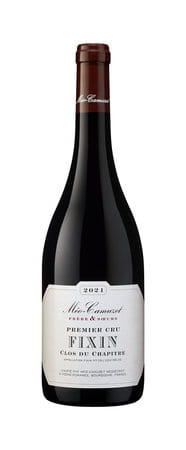-
 carbon footprint: the weight of the bottle
carbon footprint: the weight of the bottleThe glass bottle is by far the most important source of CO2 emissions in our industry.
Estimates vary from 20 to 40% of a wine company's emissions, depending on whether or not packaging and transport to the place of consumption are taken into account.
Therefore, the most important lever to quickly reduce the carbon footprint of wine is not the viticultural practices but the packaging ... We have tested in 2023, with the bottling of the 2021 vintage, a bottle weighing less than 500 g! See opposite the result ...
All the NewsFind out moreAt the estate, we have been using a bottle weighing less than 600g for more than 10 years.
But reducing the weight of our bottle further posed difficulties, especially because our bottles are stored "naked", in a pile, during the aging process before shipping. The light bottles (less than 450g) currently available on the market are not adapted to this stage, they tend to break when handled too much. They are therefore very well suited when they are boxed directly after bottling and shipping is planned quickly thereafter, but not if they have to be stacked in the cellar and then taken back for packaging. Hence the interest of this bottle of less than 500 g, which represents a significant weight reduction and seems to be resistant.
But tests over time are necessary because changing the bottle involves many adjustments for a domaine like ours: it must be checked that the new model fits in the bottling and labeling machines, in the boxes and crates; other technical criteria, which seem obvious, must be checked all the same: the regularity and quality of the manufacture, the tightness (especially through the profile of the neck), the resistance to breakage and handling as mentioned above, the length of the neck, suitable for long corks . ..
And then, there is the aesthetic aspect and the perception which emerges from it: this model respects our color code and even if its shape is a little different from what we used until now, it should please the customers... but that remains to be verified.
It is therefore an experimental phase and this new model, which comes from Switzerland, must be tested on larger series and in the long term.
It is worth the effort: we estimate that we could save more than 10 tons of glass annually if all our production were converted in this way....